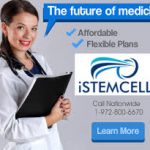iSTEMCELL is the global leader in STEM CELL education connecting researchers, providers, doctors, and clients to the industry. Dedicated to helping cane the world, and focused on restoration versus operation utilizing regenerative medicine between you are your provider we will highlight topics from Amniotic Stem Cells to Umbilical Stem Cells and everything in-between including but not limited to topics like Electrical Medicine, Non Surgical Back Pain, Autologous Stem Cell Re-injection and research topics like the difference between Mesenchymal Stem Cells, Wharton’s Jelly Stem Cells. We will also highlight protocols found in the industry, as well as things like cell count, contraption, contraindications, popular uses and stem cell reviews and even brands like HUCT Stem Cells.
Stem Cells 101
Adult stem cells
Adult stem cells are undifferentiated cells, found throughout the body after development that multiply by cell division to replenish dying cells and regenerate damaged tissues. Also known as somatic stem cells, they can be found in juvenile as well as adult animals and human bodies. Creative Bioarray provides adult stem cells from various tissue/organs of human, mouse a
Wharton’s Jelly Stem Cells
Wharton’s jelly of the umbilical cord contains mucoid connective tissue and fibroblast-like cells. Using flow cytometric analysis, we found that mesenchymal cells isolated from the umbilical cord express matrix receptors (CD44, CD105) and integrin markers (CD29, CD51) but not hematopoietic lineage markers (CD34, CD45). Interestingly, these cells also express significant amounts of mesenchymal stem cell markers (SH2, SH3). We therefore investigated the potential of these cells to differentiate into cardiomyocytes by treating them with 5-azacytidine or by culturing them in cardiomyocyte-conditioned medium and found that both sets of conditions resulted in the expression of cardiomyocyte markers, namely N-cadherin and cardiac troponin I. We also showed that these cells have multilineage potential and that, under suitable culture conditions, are able to differentiate into cells of the adipogenic and osteogenic lineages. These findings may have a significant impact on studies of early human cardiac differentiation, functional genomics, pharmacological testing, cell therapy, and tissue engineering by helping to eliminate worrying ethical and technical issues.
Stem Cells for wound healing
Postnatally, scars occur as a consequence of cutaneous wound healing. Scarless wound healing is highly desired for patients who have undergone surgery or trauma, especially to exposed areas. Based on the properties of mesenchymal stem cells (MSCs) for tissue repair and immunomodulation, we investigated the potential of MSCs for scarless wound healing. MSCs were expanded from umbilical cord blood (UCB-MSCs) and Wharton’s jelly (WJ-MSCs) from healthy donors who underwent elective full-term pregnancy caesarean sections. UCB-MSCs expressed lower levels of the pre-inflammatory cytokines IL1A and IL1B, but higher levels of the extracellular matrix (ECM)-degradation enzymes MMP1 and PLAU compared with WJ-MSCs, suggesting that UCB-MSCs were more likely to favor scarless wound healing. However, we failed to find significant benefits for stem cell therapy in improving wound healing and reducing collagen deposition following the direct injection of 1.0 × 105 UCB-MSCs and WJ-MSCs into 5 mm full-thickness skin defect sites in nude mice. Interestingly, the implantation of UCB-MSCs tended to increase the expression of MMP2 and PLAU, two proteases involved in degradation of the extracellular matrix in the wound tissues. Based on our data, UCB-MSCs are more likely to be a favorable potential stem cell source for scarless wound healing, although a better experimental model is required for confirmation.
Mesenchymal stem cells
Mesenchymal cells (also known as stromal cells or non-hematopoietic cells) are a component of the bone marrow microenvironment. Although they function to support and regulate hematopoietic cell development, it is their capacity to differentiate into multiple lineages including bone, cartilage, muscle, tendon and fat, that has caused renewed interest in these cells by stem cell biologists and researchers within the regenerative medicine and tissue engineering fields. For more background information about mesenchymal cells and their in vitro assays, please click here.




